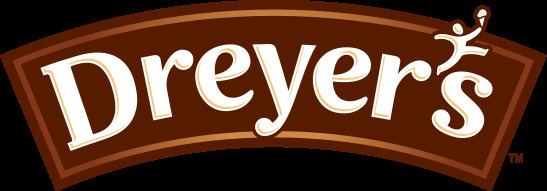Key people Mike Mitchell, CEO Website www.dreyers.com Parent organization Nestlé | Industry Foods Number of employees ~10000 (2008) Founded 1928 | |
 | ||
Revenue $1.588 billion USD (2004) Founders Joseph Edy, William Dreyer Profiles | ||
The dreyer s ice cream success story a case study for entrepreneurs
Dreyer's Grand Ice Cream Holdings, Inc., a subsidiary of Nestlé, is a United States-based producer of ice cream and frozen yogurt founded in 1928 as Edy's Grand Ice Cream in Oakland, California by Joseph Edy and William Dreyer. In 1947 the partnership was dissolved, and in 1953 William Dreyer Jr. took over and changed the name to Dreyer's Grand Ice Cream. In 1963, Junior sold the company to his key officers -- Al Wolff who ran the factory, Bob Boone who ran distribution, and Ken Cook, who managed sales and served as president from 1963 to 1977. Cook's vision was to provide American families with a truly premium ice cream they could enjoy at home. In 1977, with sales of $6 million and an employee base of 75 people, Cook sold the company to T. Gary Rogers and W.F. "Rick" Cronk for $1 million. In 1981 the company expanded and re-adopted the name Edy's Grand Ice Cream when marketing its product east of the Rocky Mountains, so as to not be confused with another company named Breyers (today owned by Unilever). Hence they market under the Dreyer's name in the Western United States and Texas, and under the Edy's name in the Eastern and Midwestern United States.
Contents
- The dreyer s ice cream success story a case study for entrepreneurs
- History
- Timeline
- Cost cutting changes
- References
In 2002, Nestle acquired Dreyer's for $3.2 billion.
History
The two brand names honor the company's founders: Joseph Edy, a candy maker, and William Dreyer, an ice cream maker. Joseph Edy was born in Missouri and raised in Montana. Joseph Oliver Edy operated a homemade candy and ice cream parlor at 122 North Broadway in Billings, Montana during the 1910s. In the 1920s he and his wife Grace decided to join his brother in California. In 1925 Joseph Edy opened the doors to Edy's Character Candies Shop in Oakland. Edy's high-quality candy quickly became recognized as among the best in the East Bay Area, and Edy was soon operating six shops. William Dreyer also ran a business in the 1920s, an ice cream manufacturing venture in the California dairy country community of Visalia. In 1926 he was recruited to run a large new plant in Oakland for National Ice Cream. While in Oakland, he met Joe Edy.
In 1928 Edy and Dreyer decided to join forces to manufacture ice cream. They secured a small factory and launched Edy's Grand Ice Cream (the "Grand" reflected their street address on Grand Avenue in Oakland). They focused on creative innovations to fuel their small venture. For example, the two men used Joseph Edy’s knowledge and expertise in candy-making to create the original Rocky Road ice cream, from a combination of flavors which Edy had previously invented. The chocolate, marshmallow and nut flavor was named Rocky Road as a means of describing the ice cream’s texture as well as the troubled economic times of the Great Depression. Edy and Dreyer are also credited with originating the Toasted Almond and Candy Mint flavors. At the time ice cream had limited flavors such as vanilla, chocolate and strawberry, but Rocky Road, introduced in 1929, was one of the first combination of flavors. Because only large marshmallows were manufactured at the time, he used his wife’s sewing scissors to cut marshmallows into bite-sized pieces to make the first batch of Rocky Road.
Timeline
Cost-cutting changes
In 2002, Nestlé insisted on a smaller container to increase profits and so the standard US half gallon (2 quarts) container (1.89 L) was downsized to 1.75 quarts (1.65 L) container. In May 2008, the 1.75 quart container was further downsized to 1.5 quarts (1.42 L). Most other ice cream manufacturers, with the notable exception of Blue Bell, followed the downsizing move.
